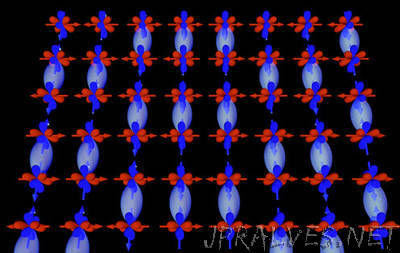
“Due to magnetism iron should - theoretically - be a poor superconductor. Nevertheless certain ironbased materials possess fine superconducting properties. Why? Because the five unbound electrons found in iron - as a result of individual modes of operation, it turns out - facilitate superconductivity. This new, long sought-for explanation - appearing in this weeks issue of Science - is the result of international co-operation between experts from the Niels Bohr Institute (NBI) i Copenhagen, Denmark, and colleagues from a number of other scientific institutions in Europa and USA. “This may come in very handily in future attempts to ‘tailor’ new superconductors”, says Brian Møller Andersen, condensed matter physicist at NBI and one of the scientists behind the research. Brian Møller Andersens field is ‘exotic’ phases in condensed matters - i.e. phases and conditions where materials display reactions markedly different from what is seen under socalled normal circumstances - and he specializes in superconductors: Matters and materials, typically metals or alloys, that can transmit electricity without loss of energy, in reality a cable void of resistance. Such superconductors exist and can e.g. be found in the vast number of magnets which CERN, the European Organization for Nuclear Research, has installed in its subterranean particle accelerator (LHC) in Geneva, Switzerland - which makes it is possible to study particles at sub-atomic level. The research community is, however, also very eager to develop superconductors for rather more ‘mundane’ purposes - not least transmission of electricity to the general public - but still needs to come up with economically viable solutions. The need for such transmission systems undoubtedly exists - the present international system, including Denmark - is based on high voltage cables which have significant resistance resulting in transmission-losses of up to 10 percent ‘along the road’ from powerplant to end-consumer. But in spite of more than one century of intense research science has not yet been able to come up with superconductors that function at ‘room-temperature’ - hence the situation still being that materials tested for superconductivity need to be cooled well down toward absolute zero (-273,15 Celcius).”
